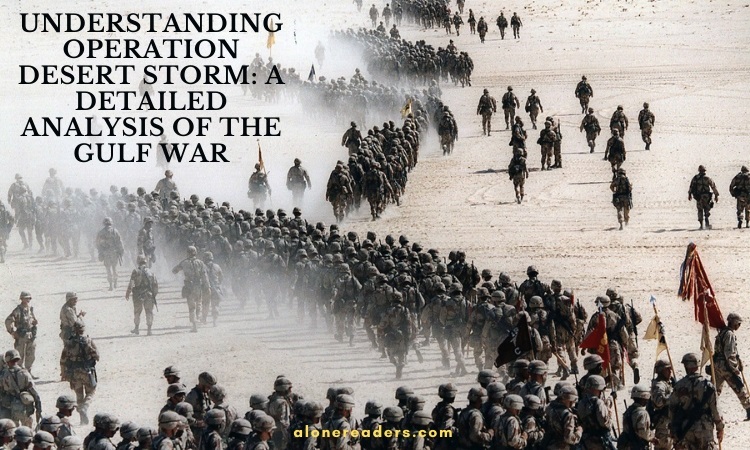
Operation Desert Storm, a major combat phase of the Gulf War, remains one of the most significant military operations in recent history. This conflict, which unfolded in the early 1990s, was marked by a coalition of forces led by the United States against Iraq, following Iraq's invasion of Kuwait. The operation was a showcase of modern warfare technology and strategies, and it had a profound impact on international relations and military tactics.
The roots of Operation Desert Storm can be traced back to August 2, 1990, when Iraqi forces, under the command of President Saddam Hussein, invaded Kuwait. This aggressive move was primarily driven by disputes over oil production and economics. The invasion immediately drew international condemnation, and the United Nations Security Council passed a series of resolutions demanding Iraq's withdrawal from Kuwait. When these demands were not met, a coalition of 35 nations, led by the United States and including countries from Europe, the Middle East, and elsewhere, formed to liberate Kuwait.
Operation Desert Storm officially commenced on January 17, 1991, after diplomatic efforts and sanctions failed to persuade Iraq to withdraw from Kuwait. The initial phase of the operation was an extensive aerial bombing campaign, which targeted key military and strategic sites in Iraq and Kuwait. This phase, which lasted for several weeks, was notable for its use of precision-guided munitions and stealth aircraft, technologies that were relatively new at the time. The bombing campaign was aimed at crippling Iraq's command and control capabilities, disrupting its military communications, and diminishing its ability to wage war effectively.
Following the aerial campaign, the ground assault began in late February. The ground forces, comprising troops from the coalition countries, launched a massive and swift attack that caught the Iraqi military off guard. The main strategy was to perform a "left hook" maneuver, swiftly moving ground forces into Iraq to cut off the Iraqi army in Kuwait. This strategy, combined with the weakened state of the Iraqi forces due to the preceding air campaign, led to a quick and decisive victory for the coalition. Kuwait was liberated in just four days, and a ceasefire was declared on February 28, 1991.
One of the most notable aspects of Operation Desert Storm was its extensive media coverage. For the first time in military history, the conflict was broadcast live to audiences around the world. This had a significant impact on public perception of the war, as well as on military tactics and strategies. The use of embedded journalists and live broadcasts brought the realities of war into the living rooms of millions, altering the way wars were reported and perceived.
The environmental impact of the conflict was also significant. Iraqi forces, in a scorched-earth policy, set fire to hundreds of Kuwaiti oil wells, causing immense ecological damage and economic loss. The images of these fires and the resulting oil spills were powerful symbols of the war's devastation.
In terms of military technology and strategy, Operation Desert Storm was a turning point. It demonstrated the effectiveness of precision-guided munitions, stealth technology, and rapid troop deployment. It also showcased the importance of coalition warfare and the role of international alliances in modern conflicts. The success of the operation was attributed to the advanced technology used by the coalition forces, as well as their superior training and coordination.
The political implications of Operation Desert Storm were far-reaching. The conflict brought to the forefront the issue of intervention in the sovereign affairs of nations and the role of international organizations like the United Nations in maintaining global peace and security. It also had a significant impact on the politics of the Middle East, particularly in terms of US involvement in the region and the balance of power among Middle Eastern countries.
In the aftermath of the conflict, a series of UN-imposed sanctions remained on Iraq, leading to years of hardship for the Iraqi people. The war also set the stage for future conflicts in the region, including the Iraq War that began in 2003. The legacy of Operation Desert Storm is complex, as it is seen as both a demonstration of military prowess and a cautionary tale of the consequences of war.
In conclusion, Operation Desert Storm was a landmark event in military history. It was not only a conflict between nations but also a demonstration of how warfare had evolved with advancements in technology and media. The operation had a significant impact on international relations, military strategy, and the geopolitical landscape of the Middle East. Its lessons continue to influence military and diplomatic strategies around the world, reminding us of the importance of international cooperation and the devastating effects of war.